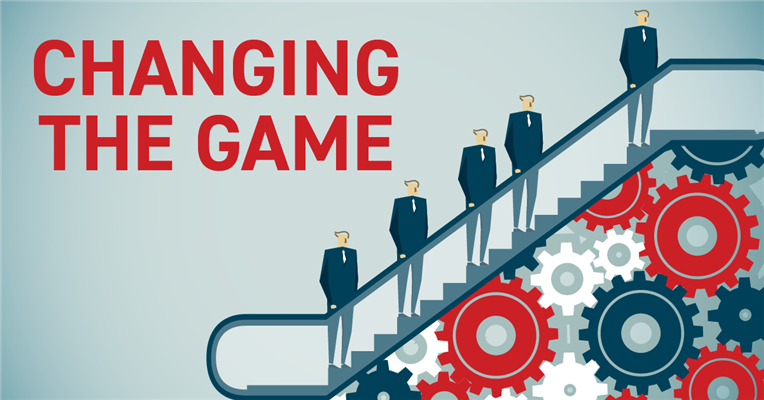In Las Vegas for the weekend, not gambling, in town for a college football bowl game. Playing table hockey with my kids. My son, proud owner of his own table hockey game for multiple years, is my doubles partner. Facing us on the other side are his two college age sisters. We are crushing the girls. Puck after puck finds the goal on their side. It is a massacre of epic proportions, one that will live in family lore for many years to come. The boys are enjoying themselves immensely, while the girls are becoming increasingly frustrated.
Then came the transformation. Oldest daughter makes a change. She suggests adding another puck to the game. We are now playing with not one puck but two. Immediately the game was transformed, not a digital transformation, (more on that later) but now the game had fundamentally changed. Our defeat was not immediate, but it was relatively swift. The girls scored goal after seemingly uncontested goal. We flailed, we jostled each other in increasingly futile efforts, we became frustrated. Nothing would go in from our side while, without apparent effort, the girls calmly put everything in they attempted. We went down in flames.
So, what was the cause of our demise? Obviously, the presence of the infamous second puck, but more than that, our inability to deal with the transformation of the game. The disruptive sister taunted “yeah, guys cannot focus on more than one thing, I knew we would win as soon as we added the other puck.” Did we fail by chasing after too many “shiny round red objects”? In any case, we failed miserably.
84% of digital transformations fail according to a Forbes article. 14% had “some improvement” (probably a little higher than the success of our pucks finding the opposite goal), and only 3% had complete success at digital transformation. The reasons for failure are many, including focusing on shiny business objects such as bleeding edge latest technologies, the potentialities of promising but untested, unproven shiny stuff like Artificial Intelligence and Virtual Reality, while trying for the big moon-shot effort, rather than focusing on strengthening core business architectures.
Of course, things are getting more complex. Everything we design and build has complexity that we did not have a few years ago. Layers of electronics and software are now symbiotic with mechanical designs. Time to market has shortened and the entrepreneur in his attic is an ever-present reality, threatening to take our place in the marketplace.
Cultural issues may also hinder your transformation effort. Employees resist most any change no matter how promising. Engineers have their own domain specific tools, siloed data, and processes that are very difficult to merge into a multi-disciplinary workspace, common in today’s complex amalgam of mechanical, electrical, and software designs.
Like your employees, your IT infrastructure pushes back hard against change. Your legacy systems do not want to change, and in most cases cannot easily change. They hold your data and processes in deeply siloed systems that were designed to handle specific challenges; not accommodate change. When purchased they promised out-of-the-box complete functionality but have since been heavily customized with the accompanying heavy investment. Outside of this sanctioned engineering ecosystem lies the active world of spreadsheets and email―where the real work gets done. All of this adds up to an enormous technical debt, burdening business, and nullifying change.
This is where leadership becomes crucially important. You can focus on shiny objects and go for a moon shot with 84% chance of failure. Or you can take a step back and focus on less shiny and enticing objectives such as:
- Concentrate on evolving your customer focus which requires expanding your teams’ access to data throughout your product's lifecycle—from requirements definition and implementation to service and use—with feedback loops in place and the means to adapt when necessary.
- Continue to improve your product and service offering by providing internal and external stakeholders with end-to end lifecycle data that meets their specific needs and time frames for action. If your systems, technologies, and processes allow, provide a digital thread to ensure accuracy of data between team and tools.
- Look forward to new business models and opportunities. This normally requires a digital representation of the product in the field or a “Digital Twin” to ensure accuracy and context including data about the Digital Twin’s unique configuration and operating conditions.
- And finally, by adapting to future needs by owning the platform technology itself. The ability to change and quickly update the platform at will; adapt and align the data model to meet new needs; include new product information, teams and processes across all domains and lifecycle stages all ensure your platform remains resilient enough to meet not just today’s business needs, but tomorrow’s.

